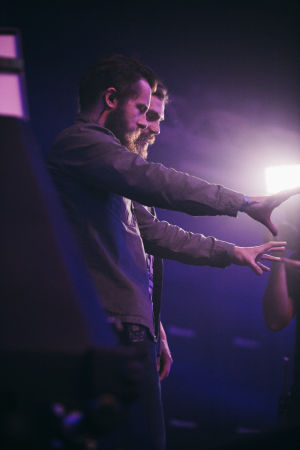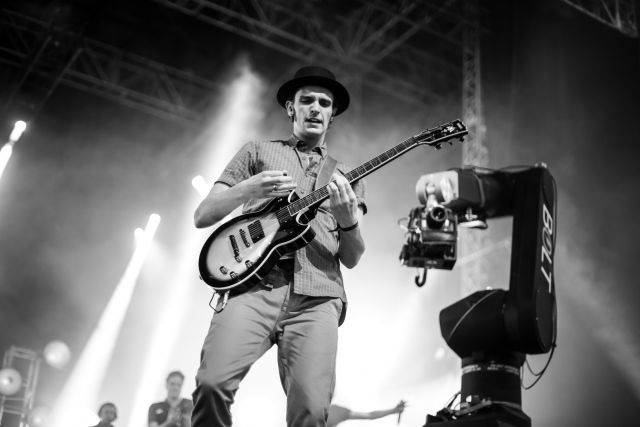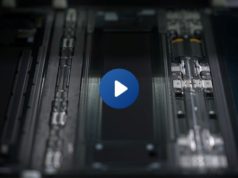
Freestyle Games’ Jamie Jackson hands me an odd, beige coloured slab of plastic, a shrunken facsimile of semi-hollow Gibson 335 guitar. It’s non-functional, but it’s easy to see where the six buttons spread over two rows at the bottom of the fret board are meant to be. On the body there are several knobs, along with the familiar strum bar of the Guitar Hero series. Made during rapid prototyping on a 3D printer, the brittle guitar (I’m warned not to drop it several times) never made its way into full production. With plans for pearl inlays, multiple non-functional knobs, and gold-coloured detailing resulting in the guitar costing over £60 ($ 100) just to manufacture, it was deemed too expensive by the powers that be at Activision.
At one stage, Guitar Hero Live—the first new Guitar Hero game since 2010’s Warriors of Rock—didn’t even have a guitar controller. Early prototypes used console camera systems in an attempt to turn drunken air guitar (admit it, we’ve all done it) into a game. Unsurprisingly, it didn’t work. But this was all part of the process, a “washing off of what Guitar Hero was,” as Jackson tells it. Other prototypes would follow, including the first iteration of what would become the Guitar Hero Live guitar, which was made out of the plastic trunking that lines the walls of Freestyle Games’ Leamington Spa studio, and some buttons ripped out of an old controller.

The final version of the Guitar Hero Live guitar.

Freestyle Game’s Jamie Jackson (left) on the set of Guitar Hero Live.
This wasn’t an entirely foreign process to Freestyle Games. As the studio behind the cult classic DJ Hero, it had been down a path of rapid prototyping before. Many of the original prototypes for DJ Hero were built inside Jackson’s garage, the product of smashed up Guitar Hero controllers and some shoddy soldering. By building a guitar out of trunking—something that would later become known as the “Frankentar”—the team could easily toy with different configurations, moving the buttons around to mess with the fundamental mechanics of the series. By switching to two rows of three buttons, the awkward pinkie presses of old—something even real guitar players have a hard time with—were removed, making gameplay more accessible, but also allowing for the introduction of new, complex chord shapes.
Read 34 remaining paragraphs | Comments
![]()







